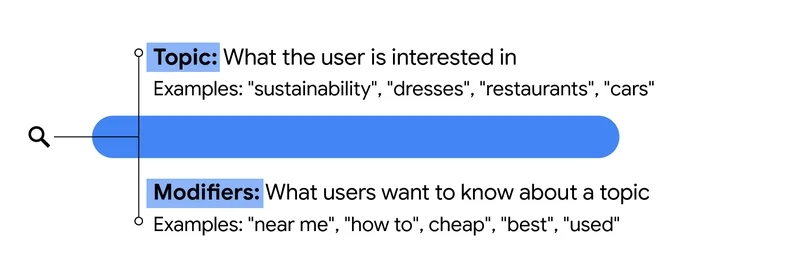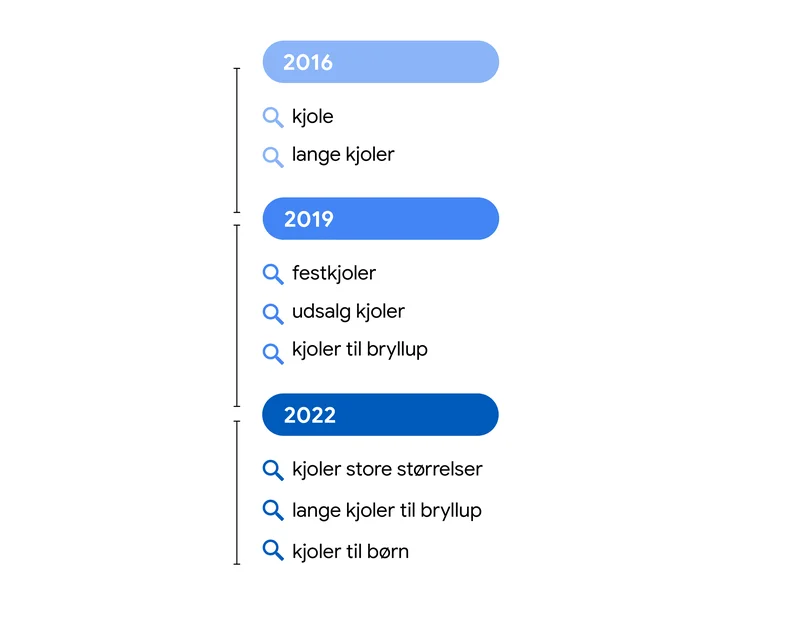Search is becoming more complex and nuanced as people use more specific language to navigate the vast library of the world’s digital information. People’s needs can be unpredictable amidst change, which means marketers can no longer rely on historic data and projections as they plan for 2023. The key to staying on top is to look at people’s intent and spot this early.

In situations of ambiguity, search insights may help companies enhance their results by serving as priceless indications of what’s occurring currently.
How people search these days
People have long used Search to learn new terms and current events, such as the growing cost of real estate. However, the phrases they search for concerning these issues shift with time.
A search term is often composed of two components. The first is the topic, and the second is the context-setter, which describes what people want to know about a topic. These descriptive words are known as “modifiers.” They make it easier for users to navigate information.

Modifiers provide advertisers with valuable insight into rapidly shifting customer preferences. They give insight into people’s sentiments and emotions about a subject and can signify intent, an early predictor of shifting demand.
In actuality, this suggests that individuals may initially look up the definition of a new phrase that has entered their lexicon, such as the “meaning of inflation.” As time passes, searches for this topic will get more specific as individuals add more terms to discover something specific.
Modifiers give richness and context to what’s on people’s minds right now, where a spike or decline in search interest for the core topic reflects a larger shift over time.
Here’s an example of this progression in the Netherlands when it comes to “duurzaam” (“sustainable”):

Preparing for shifting perceptions at significant marketing occasions
As shoppers prepare for the next Christmas shopping season, keep in mind that modifiers can vary substantially depending on the product or category. This is useful for planning purposes, especially given that the present economic scenario suggests that purchasing habits and customer expectations may alter this year.
Modifiers are used by shoppers throughout the discovery phase of their buying trips when they are conducting research, evaluating items, and determining their budgets. They frequently do this by looking for product qualities (such as colour, shape, or location) and defining themselves.
Instead of taking a one-size-fits-all strategy, brands may assist customers in finding the precise product that meets their unique requirements and preferences.
The infographic displays the evolution of Danish search trends for the term “dresses,” or “kjoler”:

How search insights may assist marketers in difficult situations
Search insights may assist you in staying close to what your customers want and adjusting your advertising accordingly. The Insights pages on Microsoft Advertising and Google Ads assist businesses in monitoring and responding to changes by delivering tailored real-time search insights. The automatic tools display trending search phrases connected to the keywords you’re tracking, allowing you to identify fresh demand as it arises.
You can observe how search interest changes over time in Google Trends, as it might take time for intent to transform into demand. When tracking keywords for a topic or product category in Google Trends, it may appear that growth has stalled and there is no fresh demand. When you become more detailed and examine the changing modifiers individuals use, you can see their altering interests and desires. To put it another way, you’ll discover early client intent.
The insights page and Google Trends work together to provide advertisers with insights that can help them show up where, when, and how consumers are searching—even in the face of change and uncertainty.






I may need your help. I tried many ways but couldn’t solve it, but after reading your article, I think you have a way to help me. I’m looking forward for your reply. Thanks.
You may reach out to us at hello@cranburry.com